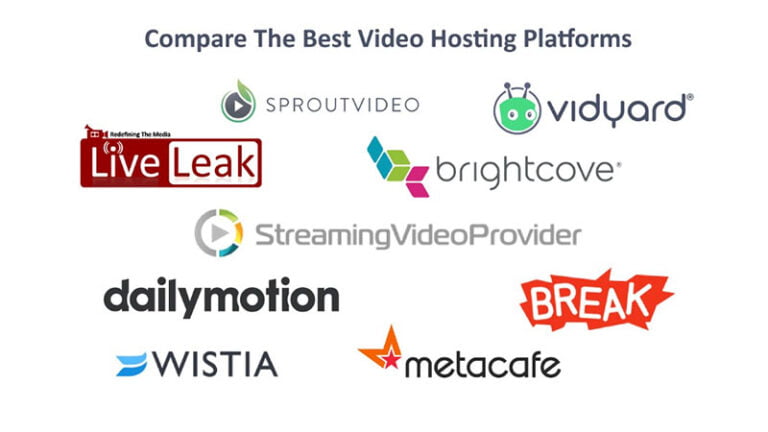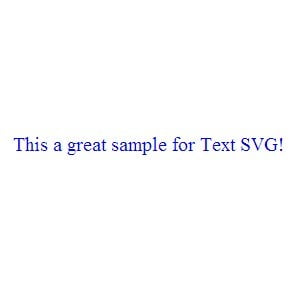Cloudinary is a host for your digital assets like images and video. If you don’t already know them, you should, because you can build it into the asset management you almost certainly need to do if you run any size of website. Cloudinary helps you serve the assets as efficiently as technologically possible, meaning optimization, resizing, CDN hosting, and goes further in allowing interesting transforms on those assets.
If you already use it, unless you use it entirely through the APIs, you’ll know Cloudinary has a Media Library that gives you a UI dashboard for everything you’ve ever uploaded to Cloudinary. This is where you find your assets and open them up to play with the settings and transformations and such (e.g. blur it — then serve in the best possible format with automatic quality adjustments). You can always pop over to cloudinary.com to use this. But wouldn’t it be nice if this process was made a bit easier?
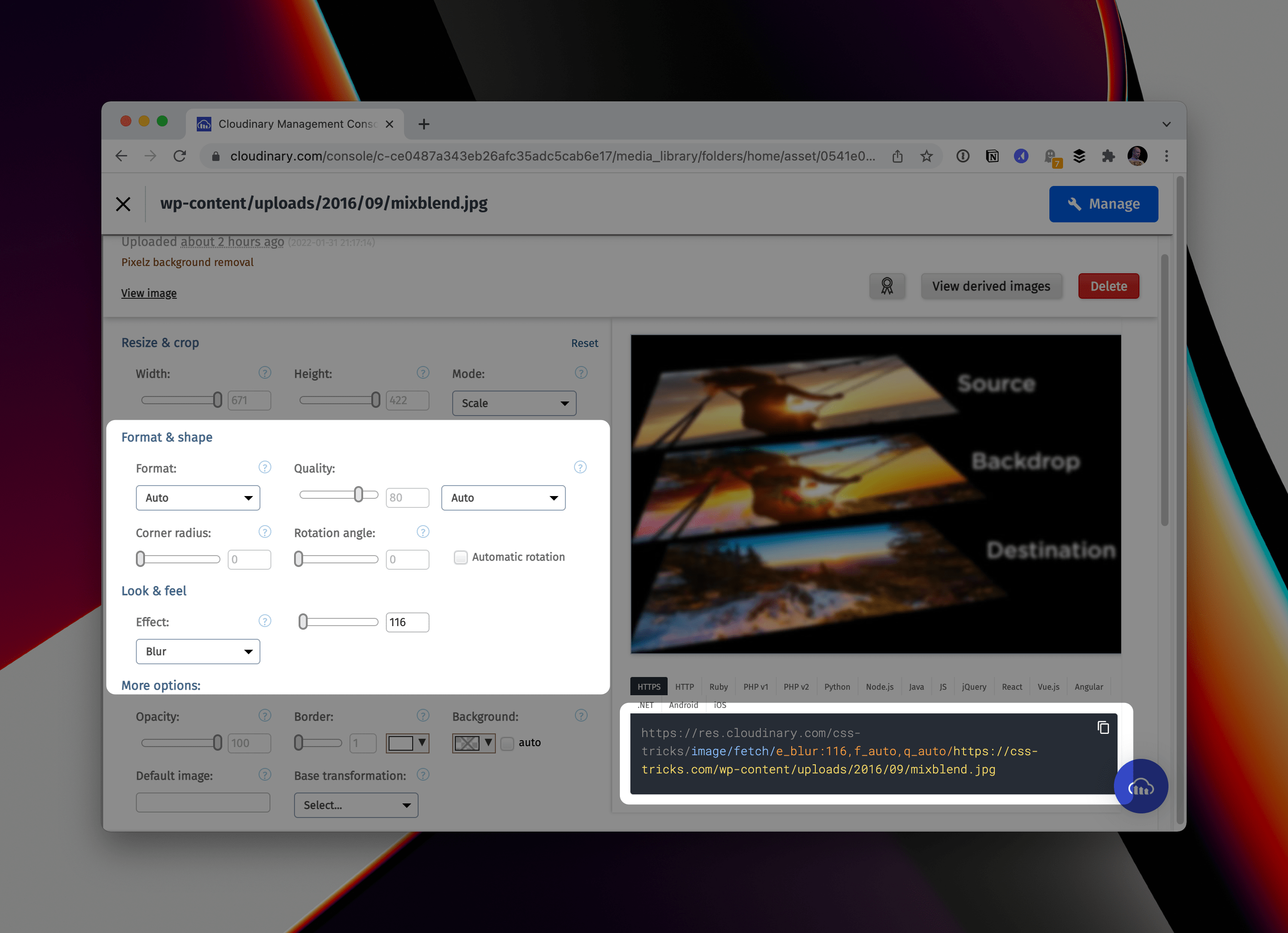
There are all sorts of moments while bopping the web around doing our jobs as developers where you might need to get your fingers on an asset URL.
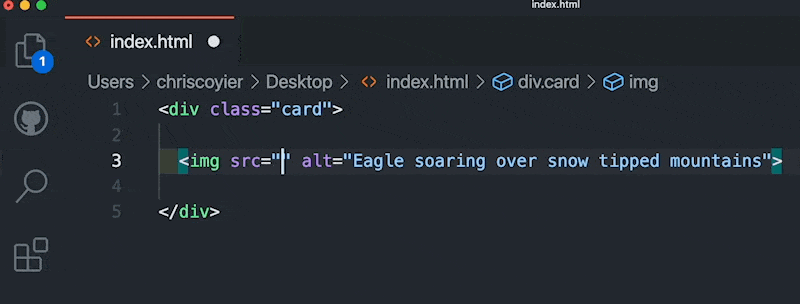
Here’s a personal example: we have a little custom CMS thing for building our weekly email The CodePen Spark. It expects a URL to an image.
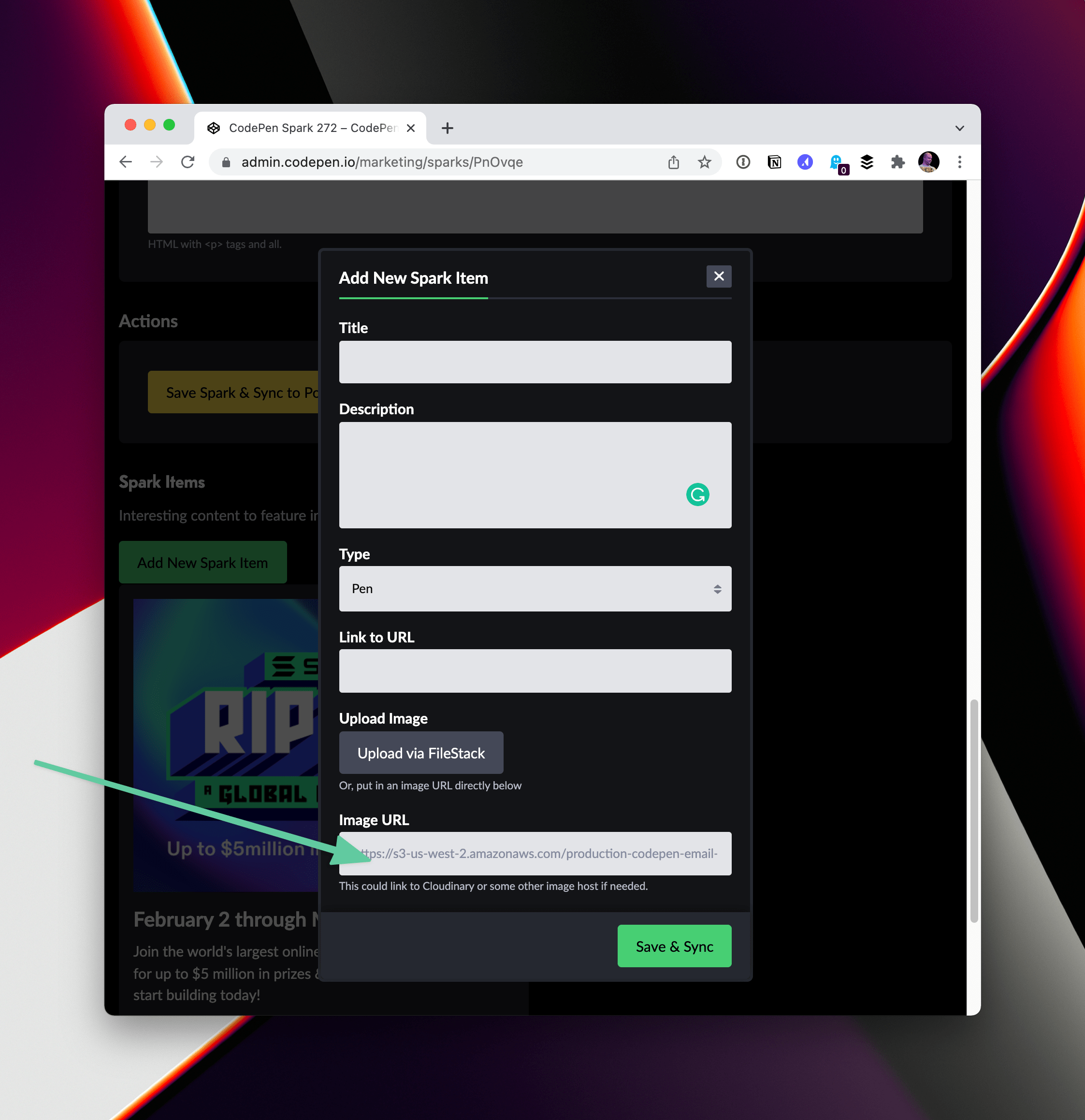
This is the exact kind of moment that the brand new Chrome Media Library Extension could help. Essentially it gives you a context menu you can use right in the browser to snag a URL to an asset. Right click, Insert and Asset URL.
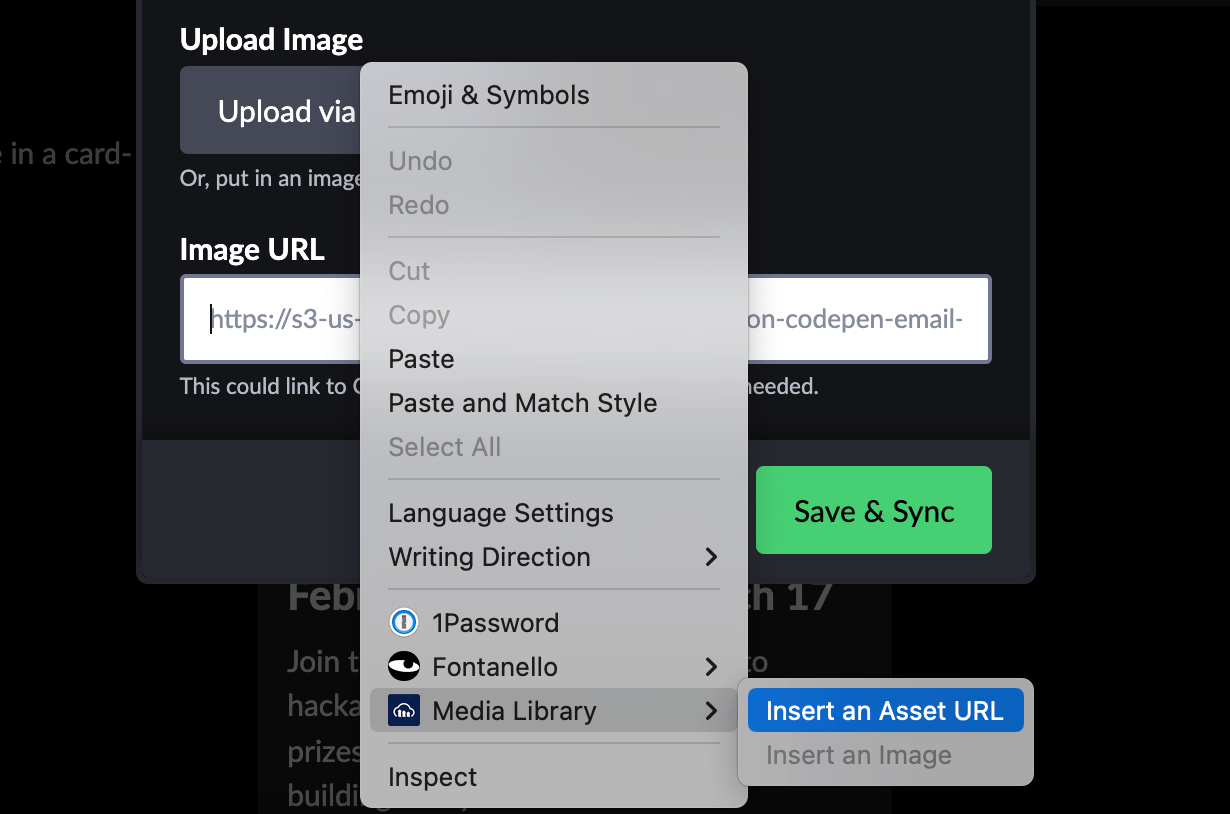
It pops up a UI right inline (where you are on the web) of your Media Library, and you pick an image from there. Find the one you want, open it up, and you can either “edit” it to customize it to your liking, or just Insert it straight away.
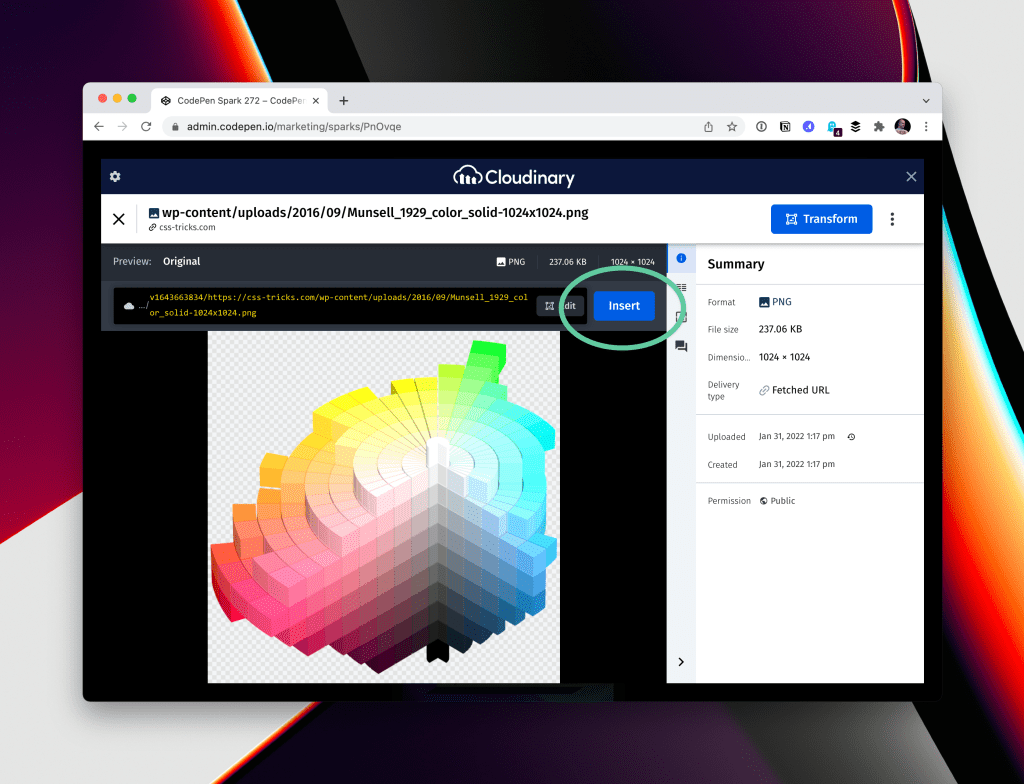
Then it plops the URL right onto the site (probably an input) where you need it.
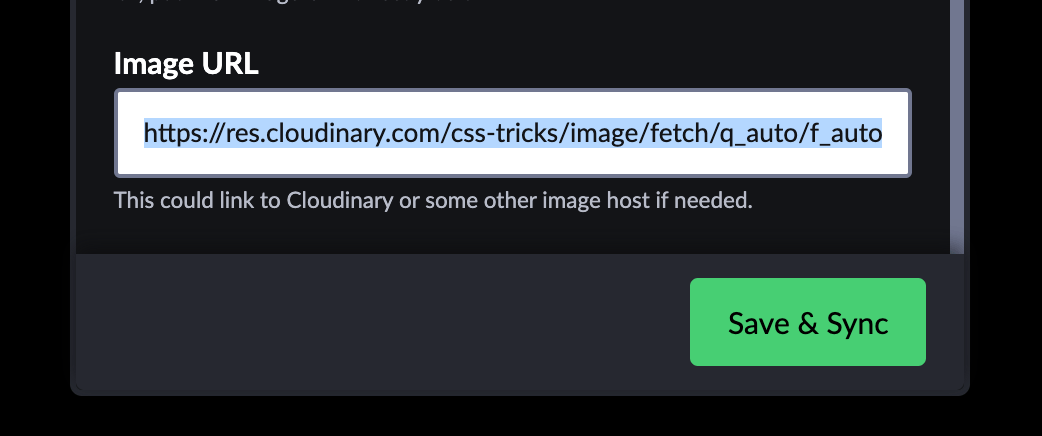
You can set up defaults to your liking, but I really like how the defaults are f_auto and q_auto which are Cloudinary classics that you’ll almost surely want. They mean “serve in the best possible format” and “optimize it intelligently”.
Sharon Yelenik introduced it on the Cloudinary blog:
Say your team creates social posts on a browser tab on an automated marketing application. To locate a media asset, you must open another tab to search for the asset within the Media Library, copy the related URL, and paste it into the app. In some cases, you even have to download an asset and then upload it into the app.
Talk about a classic example of menial, mundane, and repetitive chores!
Exactly. I like the idea of having tools to optimize workflows that should be easy. I’d also call Cloudinary a bit of a technical/developer tool, and there is an aspect to this that could be set up on anyone’s machine that would allow them to pick assets from your Media Library easily, without any access control worries.
If all this appeals to you:
Or see more at Cloudinary Labs, documentation, and blog post.




